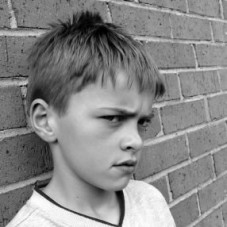Contrary to Leo Tolstoy’s famous observation that “happy families are all alike; every unhappy family is unhappy in its own way,” a new psychology study confirms that unhappy families, in fact, are unhappy in two distinct ways. And these dual patterns of unhealthy family relationships lead to a host of specific difficulties for children during their early school years.
“Families can be a support and resource for children as they enter school, or they can be a source of stress, distraction, and maladaptive behavior,” says Melissa Sturge-Apple, the lead researcher on the paper and an assistant professor of psychology at the University of Rochester.
“This study shows that cold and controlling family environments are linked to a growing cascade of difficulties for children in their first three years of school, from aggressive and disruptive behavior to depression and alienation,” Sturge-Apple explains. “The study also finds that children from families marked by high levels of conflict and intrusive parenting increasingly struggle with anxiety and social withdrawal as they navigate their early school years.”
The three-year study, published July 15 in Child Development, examines relationship patterns in 234 families with six-year-old children. The research team identified three distinct family profiles: one happy, termed cohesive, and two unhappy, termed disengaged and enmeshed.
Cohesive families are characterized by harmonious interactions, emotional warmth, and firm but flexible roles for parents and children. “Think the Cosby family,” says Sturge-Apple, offering an example from the popular TV series about the affable Huxtable family.
Enmeshed families, by contrast, may be emotionally involved and display modest amounts of warmth, but they struggle with high levels of hostility, destructive meddling, and a limited sense of the family as a team. Sturge-Apple points to the emotionally messy Barone family in the family sitcom Everybody Loves Raymond as a good example of an enmeshed family.
Finally, disengaged families, as the name implies, are marked by cold, controlling, and withdrawn relationships. The seemingly pleasant suburban family in the movie Ordinary People provides a classic illustration of a disengaged family, according to the authors. Reacting to the death of their oldest son, the parents in the film retreat emotionally, creating a barren home environment in which feelings cannot be discussed.
Although the study demonstrates solid evidence of a family-school connection, the authors caution that dysfunctional family relationships are not responsible for all or even most behavior difficulties in school. Other risk factors, such as high-crime neighborhoods, high-poverty schools, troubled peer circles, and genetic traits also influence whether one child develops more problems than another child, explains co-author Patrick Davies, professor of psychology at the University of Rochester.
The new study builds on the long-established family systems theory, which consistently has identified the three types of families using clinical observations. This study, however, is the first to empirically confirm their existence across multiple relationships within the family: in the marriage, in child-parent interactions, and among all three together, says Davies. “We were really able to look at the big picture of the family,” he adds, “and what was striking was that these family relationship patterns were not only stable across different relationships but also across time, with very few families switching patterns.”
The research found that children from disengaged homes began their education with higher levels of aggressive and disruptive behavior and more difficulty focusing on learning and cooperating with the classroom rules. These destructive behaviors grew worse as the child progressed through school.
By contrast, children from enmeshed home environments entered school with no more disciplinary problems or depression and withdrawal than their peers from cohesive families. But as children from both enmeshed and disengaged homes continued in school they began to suffer higher levels of anxiety and feelings of loneliness and alienation from peers and teachers. The authors conclude that, “children in the early school years may be especially vulnerable to the destructive relationship patterns of enmeshed families.”
In the study, families were assessed using parent and teacher reports and through direct observation in the lab. Families came to the lab each year for two visits spaced one week apart. Both parents and the child played Jenga, an interactive game, for 15 minutes, and on alternate weeks each parent interacted alone with the child for five minutes of play and five minutes of clean up. Parents were also asked to discuss two topics picked to elicit disagreement. The sessions were videotaped and evaluated for behavior patterns.
The study examined how the parents related to one another, noting any aggression, withdrawal, or avoidance and observing their ability to work as a team in the presence of the child. The researchers coded the emotional availability of the parent toward the child, whether he or she provided praise and approval or simply ignored the youngster during shared activities. Observers also followed how the child related to his or her mother and father, noting whether attempts made to engage the parents were brief and half-hearted or sustained and enthusiastic.
Source: University of Rochester

